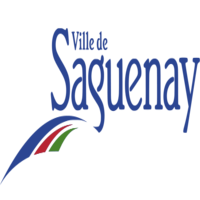RI_542
Type of resources
Available actions
Topics
Keywords
Contact for the resource
Provided by
Formats
Representation types
Update frequencies
status
Scale
Resolution
-

Administrative boundaries of sectors, boroughs and cities.**This third party metadata element was translated using an automated translation tool (Amazon Translate).**
-

Geometric and conventional representation of electrical transmission lines for planning purposes. Geospatial data from power lines represents only the core infrastructure and is structured according to the following layers of information: - CARTO-SER-ELECTRICITY: A concrete base on which a structure used to support high-voltage electrical cables is based. - Carto-Ser-Ele-Tel-Aerien: suspended electrical cable. Symbolic representation, from center pylon to center pylon. These elements form part of the layers in the digital cartographic compilation.**This third party metadata element was translated using an automated translation tool (Amazon Translate).**
-

The blue shark (Prionace glauca), is a species found in Atlantic Canadian waters which is commonly encountered in commercial and recreational fisheries. Pop-up Satellite Archival Tags (PSAT) and Smart Position and Temperature tag (SPOT) from Wildlife Computers were applied to blue sharks from 2004 to 2008 to collect data on depth (pressure), temperature and ambient light level (for position estimation). Deployments were conducted in Canada on commercial and recreational vessels from mid-August to early October, but mostly in September. A variety of tag models were deployed: PAT 4 (n=16), Mk10 (N=28), and SPOT3 (N=2) and 39 of 46 tags reported. The blue sharks tagged ranged in size from 124 cm to 251 cm Fork Length (curved); 30 were female, 15 were male and 1 was unknown sex. Time at liberty ranged from 4 – 210 days and 16 tags remained on for the programmed duration. Raw data transmitted from the PSAT’s after release was processed through Wildlife Computers software (GPE3) to get summary files, assuming a maximum swimming speed of 2m/s, NOAA OI SST V2 High Resolution data set for SST reference and ETOPO1-Bedrock dataset for bathymetry reference. The maximum likelihood position estimates are available in .csv and .kmz format and depth and temperature profiles are also in .csv format. Other tag outputs as well as metadata from the deployments can be obtained upon request from: warren.joyce@dfo-mpo.gc.ca or heather.bowlby@dfo-mpo.gc.ca.
-

PURPOSE: Establishing efficient, non-destructive sampling methods for clam population assessments. DESCRIPTION: In the Gulf of St. Lawrence (GSL) Management Region, clam assessments are uncommon due to limited resources and the labour-intensive nature of sampling clam beds. Furthermore, clam assessments typically rely on destructive sampling that disturbs sediment and removes animals from their habitat. Establishing efficient, non-destructive sampling methods for clam population assessments can reduce the impact of scientific sampling on these habitats and provide for more efficient monitoring. In this study, we tested the idea that visually observing siphon holes on the sediment surface could predict the presence, number, and size of soft-shell clams across different sites in the southern GSL. Siphon holes reasonably predicted the presence, number, and size/biomass of soft-shell clams in most, but not all, sites. Thus, in many habitats in the GSL, siphon holes can be used for population assessments, providing a powerful tool to enhance Science advice to fisheries managers. Data was collected at the following sites: * Maisonnette, Parc Maisonnette, Maisonnette, New Brunswick, Canada * Kouchibouguac, Loggiecroft wharf, Kouchibouguac National Park, New Brunswick, Canada * Shemogue, Amos Point Road, Little Shemogue, New Brunswick, Canada * Powell's Cove, Powell's Point Provincial Park, Little Harbour, Nova Scotia, Canada PARAMETERS COLLECTED: - Clam abundance - Clam biomass (total sample) - Clam size (length, weight) - Siphon hole abundance - Siphon hole size - Siphon hole characterization (i.e., identification of actual clam based on shape) - Seawater temperature - Sediment grain size - Sediment organic content (%) - Sediment relative moisture content (%) NOTES ON QUALITY CONTROL: Original data entry by Jillian Hunt and/or Isabelle Brennan. Data checked and validated prior to analysis by Jeff Clements. Data further checked and validated prior to publication by Amélie Robichaud. PHYSICAL SAMPLE DETAILS: No physical samples retained. - Clam samples returned back to original habitat after measuring and weighing in the field. - Sediment core samples stored in walk-in freezer and discarded after processing and analysis. SAMPLING METHODS: i. Identifying, counting, weighing, and measuring (with calipers) clams ii. Identifying, counting, and measuring (with calipers) clam siphon holes iii. Seawater temperature monitoring via data loggers iv. Sediment grain size, organic content, and moisture content analysis USE LIMITATION: To ensure scientific integrity and appropriate use of the data, we would encourage you to contact the data custodian.
-

A derivative of DFO’s benthic species survey for the Strategic Program for Ecosystem-based Research and Advice (SPERA) (open data record ID: e736c0f0-b19e-4842-903d-28bfc756d48a), this benthic survey funded through the Canadian Healthy Oceans Network (CHONeII) looks at the presence/absence and abundance of two biogenic habitat-forming species that are listed as vulnerable to disturbance in a subset of 50 drift camera transects in the ‘Head Harbour/West Isles Archipelago/The Passages’ Ecologically and Biologically Significant Area (EBSA) in the Bay of Fundy, New Brunswick, Canada (~113km2). Presence/absence and abundance data of the stalked sea squirt (Boltenia ovifera) and horse mussel (Modiolus modiolus) were derived from the use of high-resolution Nikon D800 36.1 megapixel still images (n=2576, see link to parent record for more descriptive survey information) to be used in species distribution modelling. Image field of view (FOV) was estimated using a 10 cm-wide trigger weight for scale,and standardized across images using the average FOV estimate (0.75 x 0.5 m) across a subset of 200 images. Species counts were then converted to abundance estimates (number of individuals per square-meter) by dividing counts by 0.375m2. Boltenia ovifera was observed at densities reaching 456 ind./m2, while Modiolus modiolus density reached a maximum of 240 ind./m2. Cite this data as: Mireault C.A., Lawton P., Devillers R. and Teed L. Presence/absence and abundance of vulnerable marine ecosystem species Boltenia ovifera and Modiolus modiolus in the lower Bay of Fundy derived from high resolution still imagery. Published September 2023. Coastal Ecosystems Science Division, Fisheries and Oceans Canada, St. Andrews, N.B. https://open.canada.ca/data/en/dataset/152ae3f1-d2b9-43d9-a7b4-d769d9e9fc41
-

Municipalities with established populations of _Ixodes scapularis_ ticks (blacklegged ticks) are municipalities where tick populations reproduce and survive from one year to the next. This indicator makes it possible to identify municipalities where their presence suggests a higher risk of tick bites and the transmission of diseases, such as Lyme disease, anaplasmosis or babesiosis. In other municipalities without an established population, the presence of ticks is possible, as ticks can be carried there by birds or terrestrial mammals. The data used to build this indicator come from passive and active acarological surveillance. Active and passive surveillance data were accumulated and then aggregated by municipality and by year. This made it possible to determine whether an established tick population is identified by the indicator at least 1 year over the study period. The climate zone favorable to the establishment of ticks _Ixodes scapularis_ highlights the areas where the estimated temperature would be favorable to the establishment of tick populations in Quebec. An area where the climate is favorable for the establishment of tick populations is defined by an annual number of degree-days above 0°C (DJ0). This indicator was calculated for the historical surveys 2009-2017 (current distribution) and for the horizons of 2030, 2050 and 2080 according to the climate scenarios SSP2-4.5 and SSP3-7.0 (future distribution). The DJ0 are calculated by calculating the difference between the daily mean temperature and the 0°C reference temperature used in this situation, then interpolating on a 10km x 10km grid. The final DJ0 value used is the 50th percentile. For more information on municipalities with established populations of _Ixodes scapularis_ ticks or the climatic zones favorable to their establishment you can consult the * [Methodological Report] ( https://www.inspq.qc.ca/publications/3483) * OR the * [INSPQ website, Current and future distribution maps of zoonoses in Quebec] (https://www.inspq.qc.ca/zoonoses/cartes) *.**This third party metadata element was translated using an automated translation tool (Amazon Translate).**
-

Information summarizing metadata records that were part of Land Information Ontario's (LIO's) Metadata Management Tool. This table represents metadata records which formerly existed on LIO’s Metadata Management Tool. Records representing data licensed for use under the Open Government Licence - Ontario have migrated to the Ontario GeoHub. The remaining records could not migrate for one of the following reasons: * The data is not spatial. * The metadata record is incomplete. * The metadata contact information is invalid. * The metadata references data that has not been made available to LIO. * LIO cannot confirm that the data has been reviewed to be released under the Open Government Licence - Ontario.
-

The Ontario Stewardship Program has established Stewardship Councils across Ontario. Ministry of Natural Resources staff no longer directly administer and support Ontario Stewardship Councils. Community-based partners and stakeholders now independently administer Stewardship Councils. We are no longer updating this data. It is best suited for historical research and analysis. __Stewardship Zone__ The Ontario Stewardship Program divides the province into four administrative regions or zones. Any given Stewardship Council will fall into one of these zones. __Stewardship Council Area__ The Ontario Stewardship Program established Stewardship Councils across southern Ontario and a portion of Northern Ontario. Where these councils have defined administrative boundaries, the location is stored in this data class. __Stewardship Council Location__ Most councils have established administrative boundaries that generally conform to upper tier municipalities. There are some councils in Northern Ontario which are generally located in and around a certain geographic location but do not have established administrative boundaries. This data class is primarily used to store point locations associated with these northern councils.
-

One meter digital elevation model generated from bare earth LiDAR points. LiDAR Services International (LSI), a Calgary-based LiDAR company completed an airborne LiDAR survey for the Redberry Lake Biosphere Reserve (RLBR) and Agriculture and Agri-Foods Canada (AAFC) in October 2011. The project involved collection of LiDAR data for a 362.97 km2 block area, 252.77 km2 for Redberry Lake and 110.20 km2 for AAFC northwest of Saskatoon, SK.
-

The AAFC Infrastructure Flood Mapping in Saskatchewan 1 meter Full Feature DEM are the full feature DEMs created at a 1 m interval for the capture area of Saskatchewan. The full feature grid point elevations were derived from the highest point in the High Vegetation class. At coordinates with no High Vegetation points the elevation of the corresponding bare earth grid point was applied.
 Arctic SDI catalogue
Arctic SDI catalogue